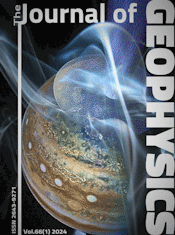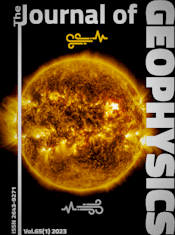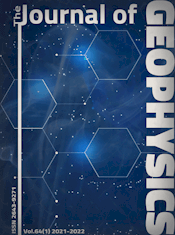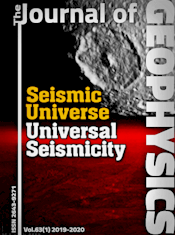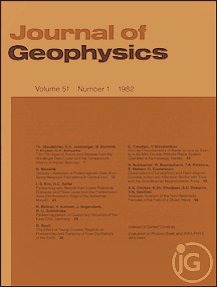The normal modes of a uniform, compressible Maxwell half-space
Article Sidebar

Vols. 1-18 (1924-1944), ISSN 0044-2801
Main Article Content
Abstract
The analytical solution for the load-induced deformation of a uniform, compressible, hydrostatically pre-stressed elastic half-space is derived. The solution is correct to first order in the quantity ε, which is inversely proportional to the wave number k of the deformation. Usually ε is very small compared with unity for Earth deformations on a scale amenable to the half-space approximation. Since pre-stress advection is included in the analysis, the correspondence principle allows us to solve the field equations governing the deformation of the associated Maxwell half-space. The viscoelastic solution shows that the relaxation of the Maxwell continuum is characterized by a fundamental mode and a rapidly decaying overtone of much smaller amplitude. In the incompressible limit the overtone is not excited. The significance of the results for the relaxation of the Earth's mantle is briefly discussed.
 ARK: https://n2t.net/ark:/88439/y075549
ARK: https://n2t.net/ark:/88439/y075549
Permalink: https://geophysicsjournal.com/article/207
Article Details
References
Biot, M.A. (1954) Theory of stress-strain relations in anisotropic viscoelasticity and relaxation phenomena. J. Appl. Phys. 25:1385-1391
Bullen, K.E. (1963) An introduction to the theory of seismology, 3rd edn. Cambridge: Cambridge University Press
Cathles, L.M. (1975) The viscosity of the Earth's mantle. Princeton: Princeton University Press
Farrell, W.E. (1972) Deformation of the Earth by surface loads. Rev. Geophys. Space Phys. 10:761-797
Frazer, R.A., Duncan, W.J., Collar, A.R. (1938) Elementary matrices. Cambridge: Cambridge University Press
Jeffreys, H. (1976) The Earth, 6th edn. New York: Cambridge University Press
Lambeck, K., Nakiboglu, S.M. (1981) Seamount loading and stress in the ocean lithosphere 2. Viscoelastic and elastic-viscoelastic models. J. Geophys. Res. 86:6961-6984
McConnell, R.K. jr. (1968) Viscosity of the mantle from relaxation time spectra of isostatic adjustment. J. Geophys. Res. 73:7089-7105
Nakiboglu, S.M., Lambeck, K. (1982) A study of the Earth's response to surface loading with application to Lake Bonneville. Geophys. J. R. Astron. Soc. 70:577-620
Parsons, B.E. (1972) Changes in the Earth's shape. Ph.D. thesis, Cambridge University
Peltier, W.R. (1974) The impulse response of a Maxwell Earth. Rev. Geophys. Space Phys. 12:649-669
Peltier, W.R. (1976) Glacial-isostatic adjustment - II. The inverse problem. Geophys. J. R. Astron. Soc 46:669-705
Peltier, W.R. (1982) Dynamics of the ice age Earth. Adv. Geophys. 24:1-146
Sneddon, I.A. (1951) Fourier transforms. New York: McGraw-Hill
Walcott, R.I. (1970) Flexural rigidity, thickness, and viscosity of the lithosphere. J. Geophys. Res. 75:3941-3954
Wolf, D. (1984) The relaxation of spherical and flat Maxwell Earth models and effects due to the presence of the lithosphere. J. Geophys. 56:24-33
Wolf, D. (1985a) Thick-plate flexure re-examined. Geophys. J. R. Astron. Soc. 80:265-273
Wolf, D. (198Sb) On Boussinesq's problem for Maxwell continua subject to an external gravity field. Geophys. J. R. Astron Soc. 80:275-279
Wolf, D. (1985c) An improved estimate of lithospheric thickness based on a re-interpretation of tilt data from Pleistocene Lake Algonquin. Can. J. Earth Sci. (In press)
Wu, P., Peltier, W.R. (1982) Viscous gravitational relaxation. Geophys. J. R. Astron. Soc. 70:435-485



